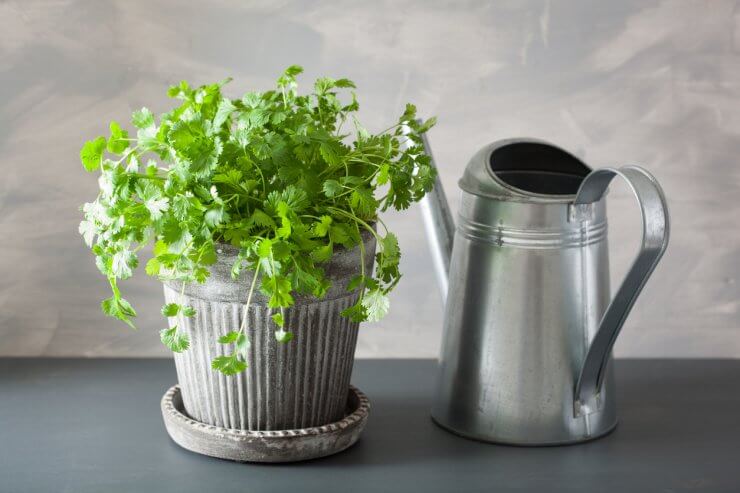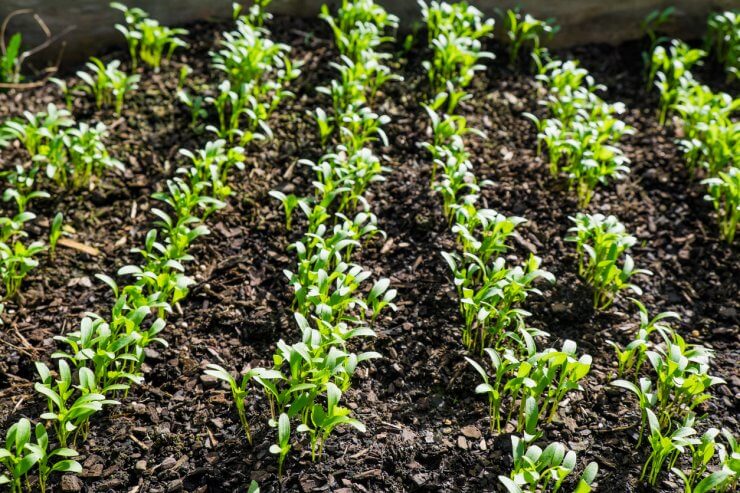
Cilantro in pot with watering can
Watering Your Cilantro Plants
Once your cilantro has settled in—whether it’s in a container, a raised bed, or open ground—consistency is key when it comes to watering. Cilantro likes a long drink of water once in a while. How long a while is depends on your environment and your soil. Cilantro likes soil that’s moist, but not soggy.
In general, you’ll want to water deeply about once a week; again, it depends on your specific environment. If the top of the soil is a little dry, that’s OK. But don’t let the soil dry out. This is especially important when you’re tending plants growing in containers—the heat of the container can dry out the soil and the root has nowhere else to go to get water.
For plants in the ground, a long deep watering is the way to go. It’s best to water in the morning, so your cilantro can soak up that deep drink of water and put it to work growing. Of course, if you fall behind in your watering and notice your plant is in serious need of a deep drink, don’t wait until morning. Go get the hose.
Mulch is beneficial to help conserve water and deter weeds. You can lay down a 2- to 3-inch layer of wood mulch or compost to help with water retention.

Cilantro seedlings growing in mulch in garden bed
When it comes to weeding around your cilantro, it’s best to get a jump on them from the beginning. If you’ve used weed-free soil and well-rotted organic matter, and laid down mulch, you shouldn’t have a big weed problem.
Properly preparing your soil is an excellent preventive measure against the emergence of weeds. When you till or cultivate the area where you’ll plant your cilantro, remove weeds and debris. You’ll likely find that the first few weeks after planting are the only time you’ll be pulling up weeds around your plants.
If weeds spring up around your cilantro during the growing season, work the soil around the base of the plants with a hoe—only deep enough to kill the weeds and not damage the plant’s roots.
Fertilizing Your Cilantro Plants
Fast-growing cilantro, with its relatively short lifecycle, does not need much—if any—fertilizer. If you have prepared your soil well with organic matter, you won’t need to fertilize your cilantro often. A little liquid nitrogen fertilizer applied when the plants are about 2 inches high might be enough; you may also want to add a second application a few weeks later. However, be careful not to over-fertilize cilantro.
Pruning Your Cilantro Plants
Cilantro does not need pruning per se, but you will encourage bushier plants if you pinch or snip off some of the top leaves from the main stem as soon as they appear to be developing flowers or seedpods. This will direct plant energy back into leaf production.
How often do you have to fertilize, water, weed, or prune your cilantro? Do you have any particular challenges growing cilantro? Please share your tips for nurturing healthy cilantro.


 Previous
Previous

